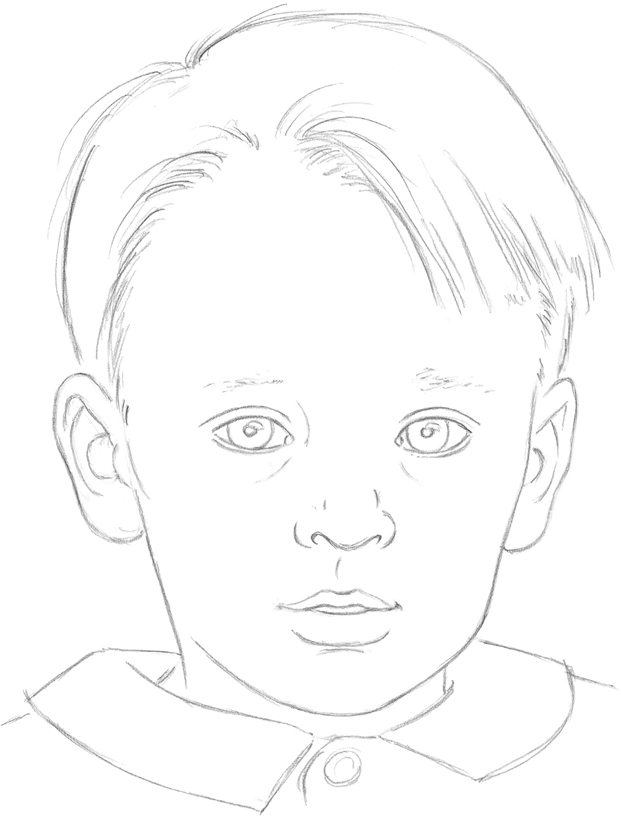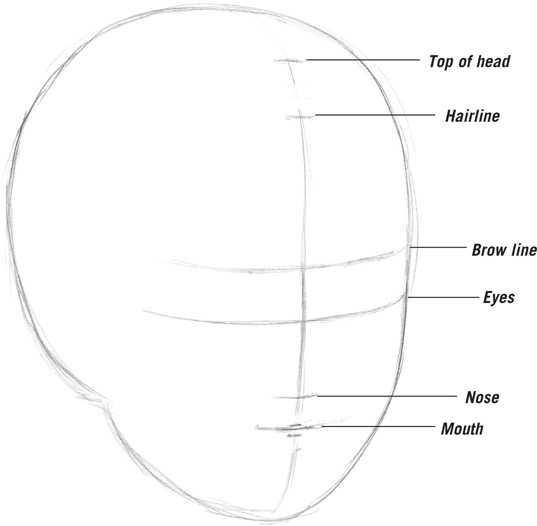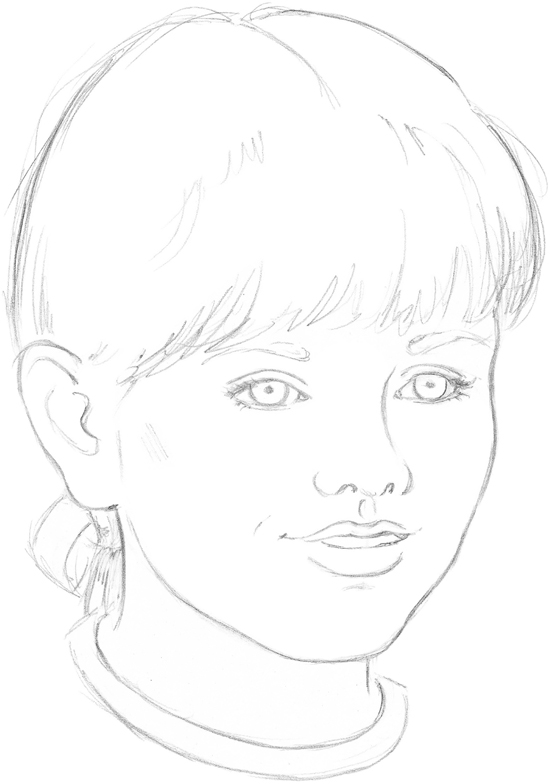
Children’s proportions are different than those of adults: Young children have rounder faces with larger eyes that are spaced farther apart. Their features are also positioned a little lower on the face; for example, the eyebrows begin on the centerline, where the eyes would be on a teenager or an adult. As a child ages, the shape of the face elongates, altering the proportions.


PLACING THE FEATURES Based on the placement of this subject’s features, you can estimate that he is around five or six years old. The face has elongated enough to shift the brow line so that it lines up with the tops of the ears, showing that the child is no longer a baby. But the eyes are spaced farther apart, indicating youth. The mouth is still relatively close to the chin, which also emphasizes his young age. (See the diagrams at right for more on the shifting of the features with age.)

DRAWING A BABY IN PROFILE The profile of a child is usually very rounded. Youngsters generally have bigger, more protruding foreheads than adults do. And children’s noses tend to be smaller and more rounded, as well. The shape of a baby’s head in profile also fits into a square. Block in the large cranial mass with a circle; then sketch the features. The brow line is at the horizontal centerline, whereas the nose is about one-fourth of the way up the face. Study where each feature falls in relation to the dividing lines. In addition, light eyebrows and wispy hair help indicate a baby’s age; as children get older, their hair grows in thicker.


ADDING CHILDREN’S DETAILS The features shift slightly in a three-quarter view, as shown here. Although a baby’s features are placed differently on the head than an older child’s are, their facial guidelines shift similarly, following the direction in which the head turns. Place the features according to the guidelines. Hair style and clothing—including accessories— can also influence the perceived age of your subject!